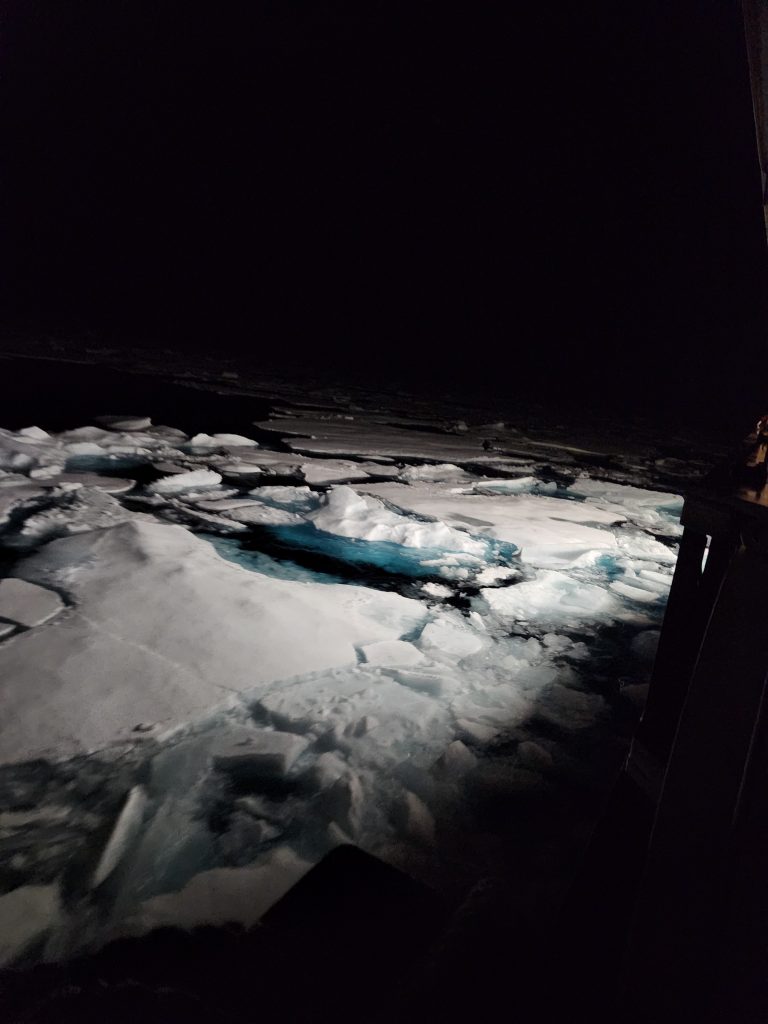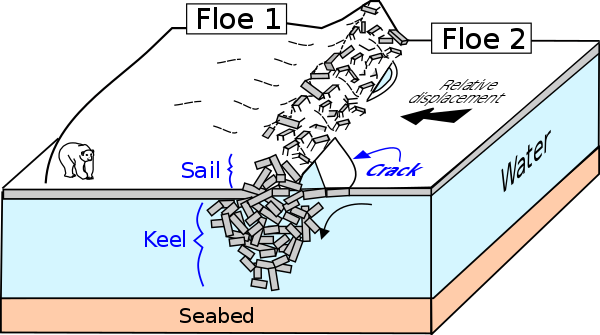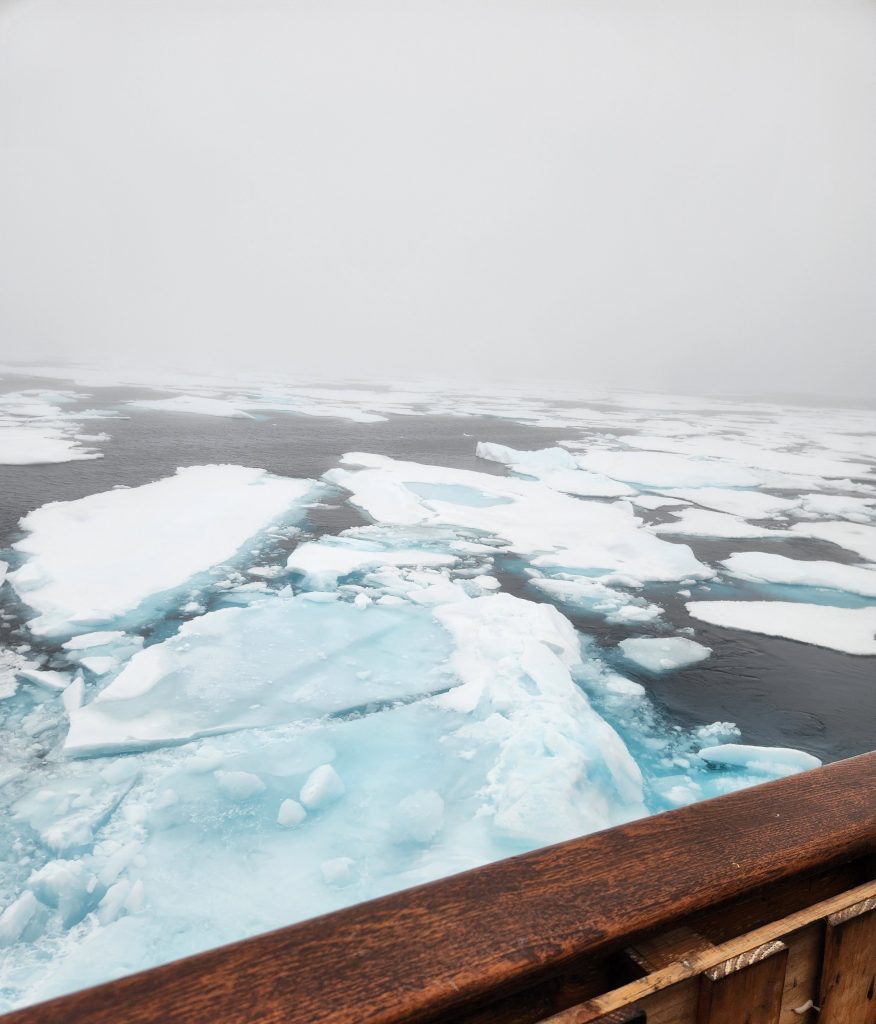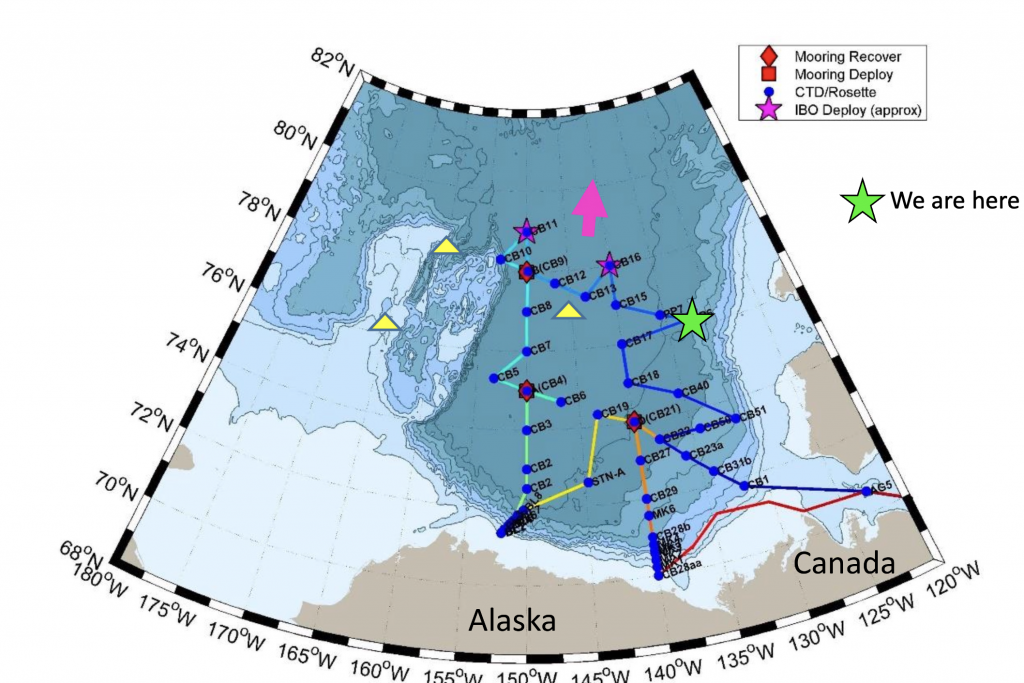Dispatch 7: Sea Ice Spotted
Sam De Abreu
September 21, 2023
Dispatch 7: Sea Ice Spotted
Hi, my name is Sam De Abreu, and I'm a first-year PhD student at Yale University. It's my first time aboard the Louis S. St-Laurent, and I've never seen sea ice until Tuesday morning. It was a normal night watch morning: cold, dark and quiet, with most of the night crew relaxing before the next CTD cast. Suddenly, the boat shook erratically accompanied by a grinding-like sound permeating throughout the ship. We looked to each other with excitement, like children on Christmas morning, and sprinted to the deck where large sheets of ice (ice floes) were rubbing against the ship with many more in the distance. We had reached the sea ice!
Sea ice comes in many shapes and sizes, depending on its age and history. In the winter, sea ice forms (this ice is termed first-year sea ice) and is relatively smooth. If this ice survives the summer, it graduates to multi-year ice. By then, the ice has accumulated some “battle scars,” making it rougher, thicker (up to a couple meters thick), and robust due to collisions with other ice floes with some even developing ridges (sometimes called keels) underneath and sails overhead. Sometimes some of the ice melts on top of the floe and forms a melt pond, adding to the uniqueness of a floe. The ice floes we saw were mostly older multi-year ice with some containing ridges, sails and/or melt ponds.
Typically, we would have encountered sea ice much further south (earlier in our expedition); however, this summer has been particularly troubling for the Arctic sea ice cover with concentrations being significantly lower than average (see http://nsidc.org/arcticseaicenews/2023/09/). While yearly fluctuations like this have occurred before (and seem to be becoming more frequent), the summertime sea ice extent has been declining on a decadal time scale with it losing about 2 million square kilometers since 1979; the minimum sea-ice extent in recent summers has been around 4 to 5 million square kilometers (see https://climate.nasa.gov/vital-signs/arctic-sea-ice/). This is why research expeditions like this are important for understanding continued climate changes in the Arctic Ocean. As we head further north, we are likely to encounter larger ice floes! Stay tuned!



